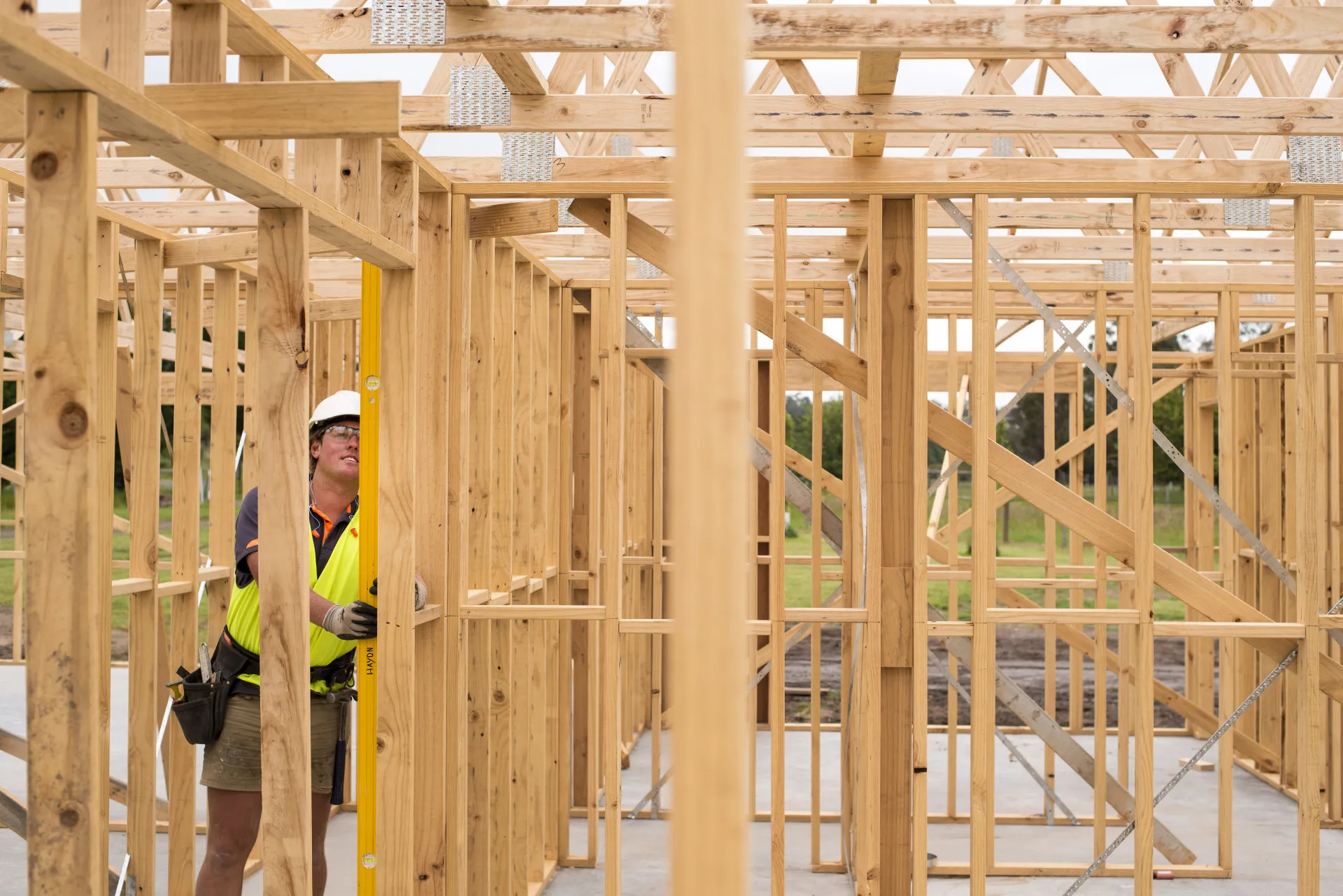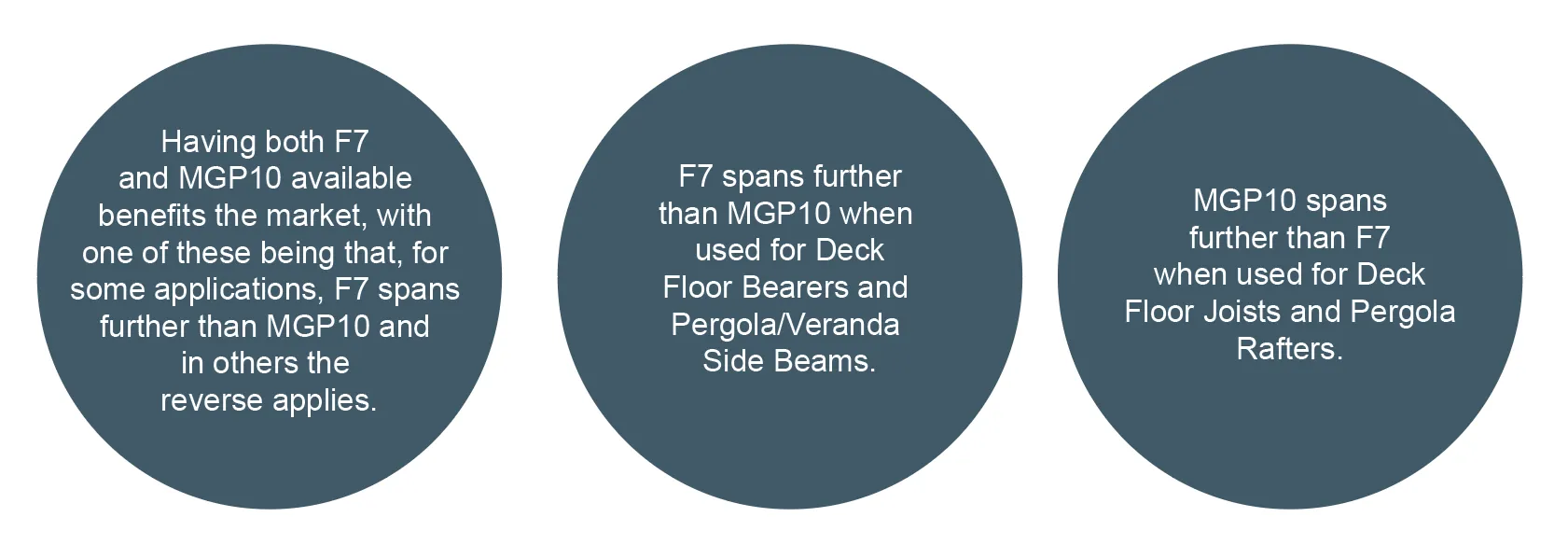Is F7 or MGP10 Graded Timber Better for Outdoor Structures in Australia?
Is F7 or MGP10 Graded Timber Better for Outdoor Structures in Australia?
For our customers’ customer, the correct selection of outdoor treated structural pine is extremely important when building a balcony, pergola or other outdoor project.
As our channel customers know, any pine used outdoors must be treated to ensure protection against termites and fungal decay. While colour has traditionally been used to indicate treatment (green indicating outdoor treatment), new technologies mean that colour alone can no longer be relied on to determine treatment type.
Today the proven and preferred termite and fungal treatment for outdoor structural pine is Light Organic Solvent Preservative (LOSP), which also comes in low-odour options.
As we all know, the required Hazard level will have a bearing on the available treatment options, with most of the outdoor building project typically requiring H3 treatment (excluding posts in the ground which require H4 treatment). Treatment and Hazard classes are shown on individual sticks of timber, either in the form of a stamp or a stapled tag.
For structural projects, the stress grade of the timber is also important. Timber is stress graded so that it can be classified into groups that achieve the same basic structural design properties. These properties include, for example, bending stiffness and strength, tension strength and compression strength. Timber sold in Australia is stress graded as either MGP (Machine Graded Pine) or F (either visually or machine graded). While most treated pine sold in Australia is either MGP10 or F7, other grades such as MGP12, MGP15 and F5 are also available. Grade is also shown on individual sticks of timber along with treatment and hazard class. The industry is often asked why it offers pine products in both MGP10 and F7 grades when they appear to be similar products; this is a great question!
In terms of product performance, both MGP10 and F7 grades meet Australian standards. Stiffness and strength are the two main properties to consider when deciding which grade is better suited to a project. MGP10 has a higher stiffness grade while F7 has a slightly higher strength grade. If plans have been provided, it is important to purchase the exact grade of timber specified to ensure that structural integrity is maintained. If not, you can confidently choose either grade.

When grading timber, most mills test firstly for stiffness, which is generally the basis on which most structural members are designed. Stiffness measures how much a beam will deflect for any given load and is related to density, fibre quality, moisture content and pine defects. MGP10 measures 10.0GPa (gigapaschals), while F7 measures lower, at 7.9GPa.
Equally important is bending strength, which refers to how much load a beam can take before it breaks. Bending strength is largely determined by the number and location of defects, with any large knots at the edges of boards reducing overall bending strength. MGP10 measures 17MPa (megapascal) and F7 measure 18MPa. Timberlink manufactures MGP10 to achieve the higher 18MPa, so Timberlink MGP10 can be substituted if F7 has been specified.
Given the differences in bending and stiffness measures, it makes sense that F7 and MGP10 grades will also achieve different spans when used in structural applications. In some cases, F7 will span further, while in others MGP10 will. F7 grades will generally span further in applications where bending strength is the governing design property (eg bearers), while MGP10 will span further where stiffness is the major factor (eg pergola rafters). For example, F7 will span further than MGP10 when used as a deck floor bearer due its higher bending strength, while MGP10 will span further than F7 when use as a deck floor joist because it has a higher modulus of elasticity.
For outdoor projects containing exposed structural members, appearance is also important. At Timberlink, we like to provide our customers with strong and good-looking pine, which is why we visually over-ride every piece of structural timber we produce, be it MGP or F graded. For premium outdoor projects, Timberlink Green from NZ comes in an Outdoor Select grade.
The nature of the trees, the regions in which the plantations are grown and the local mill operations are all factors that determine which structural grade is manufactured.
New Zealand pine for outdoors, much of which is sold in Australia, is predominantly graded as F7. This is because the New Zealand resource has a lower stiffness measure than the Australian one and its high quality pruned material with few or no defects gives it a higher bending strength. Furthermore, New Zealand pine is better suited to producing mid to wide sizes – highly complementary to the Australian resource which tends to produce narrow to mid wide sizes. Grading Australian pine as F7 enables the industry to offer a very wide range of sizes across the one grade.
Offering both MGP10 and F7 is good for the industry and consumers. Both meet Australian Standards so you can rest assured that both grades will do a great job




